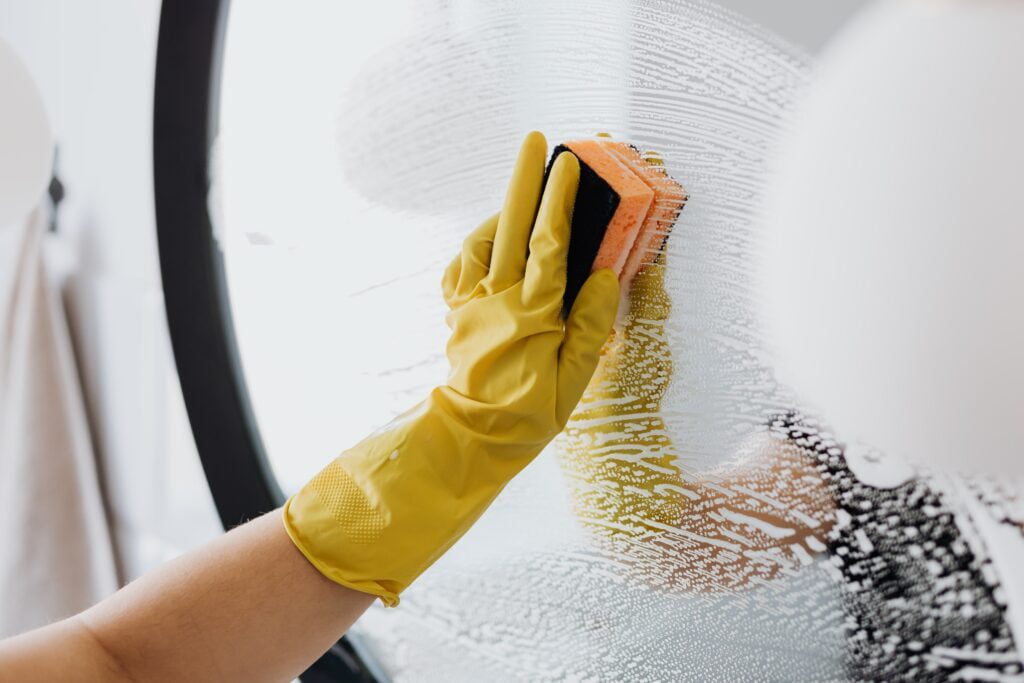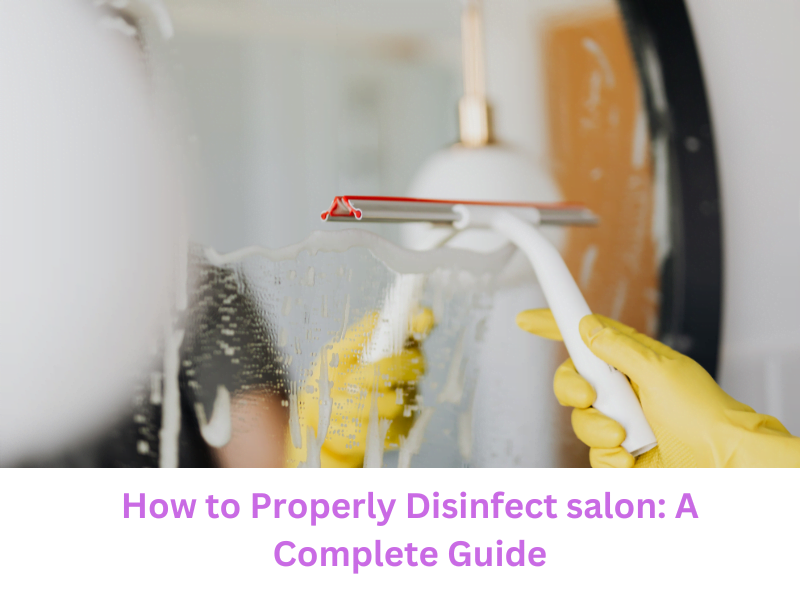Introduction:
Maintaining cleanliness and hygiene is crucial in salon environments to ensure the safety and well-being of both clients and staff. Disinfecting implements and surfaces after each use is a fundamental practice that should be followed. In this article, we will provide a comprehensive guide on how to effectively disinfect implements and surfaces, as well as discuss the requirements of a good disinfectant.
How to Disinfect Implements
Implementing proper disinfection procedures for tools used in the salon is essential to prevent the spread of bacteria and infections. Follow these steps to ensure proper disinfection of implements:
- Sanitise the implements: Before disinfection, remove any visible debris or residue from the implements by sanitising them thoroughly.
- Prepare a disinfecting solution: Create a disinfecting solution following the manufacturer’s instructions. Use a solution that is suitable for the implements being disinfected.
- Immerse implements in the solution: Submerge the implements completely in the disinfecting solution for the recommended duration, usually 10-15 minutes. Adhere to the manufacturer’s guidelines for specific timeframes.
- Remove items with care: After the designated disinfection time, carefully remove the implements from the solution using a basket lift or tongs. This step prevents cross-contamination.
- Rinse, dry, and store properly: Rinse the disinfected implements with clean water to remove any residual disinfectant. Thoroughly dry the implements and store them in a clean, disinfected, dry, and covered container to maintain their cleanliness until their next use.
Note: Brushes should be disinfected after each use to accommodate multiple services throughout the day. Consider using disposable, one-time items for aesthetic services and discard them after use.
How to Disinfect Surfaces
Proper disinfection of salon surfaces is crucial to maintain a clean and safe environment. Follow these steps for effective surface disinfection:
- Clean the surface: Begin by cleaning the surface with an appropriate cleaner to remove dirt and debris. This step ensures effective disinfection.
- Apply disinfectant: Select a suitable disinfectant, preferably a hospital-grade one, and apply it to the surface. Ensure the disinfectant is approved for the specific surface you are cleaning.
- Allow sufficient contact time: Leave the disinfectant on the surface for at least 10 minutes, or as recommended by the manufacturer. This ensures enough time for the disinfectant to eliminate any pathogens.
- Wipe dry: After the contact time, use a clean, damp cloth or paper towel to wipe the surface dry. This step helps remove any remaining disinfectant residue.
Chemical Agents for Disinfection

Different chemical agents can be used for disinfection in the salon. Here are some common examples:
a) Antiseptics: Antiseptics are milder substances that can kill or inhibit the growth of bacteria. They are safe to use on the skin. Examples include hydrogen peroxide, formalin, alcohol, and boric acid.
b) Formalin: Formalin is a safe and effective sanitising agent that can act as both an antiseptic and a disinfectant, depending on its strength. It typically contains around 37% to 40% formaldehyde dissolved in water.
c) Alcohol: Immersing implements in 70% alcohol is an effective method of disinfection. For electrodes and objects with sharp edges, gently rubbing them with a cotton pad dampened with 70% alcohol is recommended. Afterwards, place the disinfected articles in a dry sanitiser until they are ready for use.
Requirements of a Good Disinfectant
When selecting a disinfectant, there are several essential factors to consider:
1) Convenience of Preparation: Look for disinfectants that are ready-to-use or require minimal mixing and preparation to save time and effort.
2) Quick Action: Choose a disinfectant that acts swiftly against a broad spectrum of pathogens, minimising exposure time and reducing the risk of cross-contamination.
3) Preferably Odourless: Opt for odourless disinfectants to ensure a pleasant environment without compromising sanitisation effectiveness.
4) Non-Corrosive: Select non-corrosive disinfectants to protect surfaces, equipment, and materials, minimising maintenance costs and safety hazards.
5) Economical: Evaluate the cost per use and efficacy of the disinfectant to ensure it aligns with your budget and delivers optimal results.
6) Non-Irritating to the Skin: Prioritise disinfectants that are non-irritating to the skin, ensuring a safer working environment and user comfort.
Proper Use of Disinfectants

Follow these guidelines for proper use of disinfectants in the salon:
1) Disinfect or Discard Items Used on Clients: Disinfect or discard items that come into direct contact with clients, following manufacturer guidelines or using appropriate disinfectant solutions.
2) Sterilise Non-Porous Tools: Sterilise non-porous tools that come into contact with blood or bodily fluids to eliminate potential pathogens.
3) Dilute Disinfectants According to Manufacturer’s Directions: Mix disinfectants according to the manufacturer’s instructions to ensure optimal results.
4) Store Disinfected Implements Appropriately: Store disinfected implements in a clean, closed, dry, and covered container to maintain cleanliness and prevent recontamination.
5) Clean Laundry Bins Daily: Clean laundry bins daily with an appropriate disinfectant to prevent the growth of bacteria and reduce the risk of cross-contamination.
6) Avoid Using Disinfectants on Human Skin, Hair, or Nails: Disinfectants are not meant for direct use on human skin, hair, or nails. Practise good hand hygiene instead.
7) Keep Disinfectants Out of Reach of Children: Store disinfectants securely and out of the reach of children to prevent accidental ingestion or misuse.
8) Maintain Personal Hygiene: Regularly wash hands with soap and water to prevent the spread of germs.
Conclusion:
Proper disinfection of implements and surfaces is essential in maintaining a clean and safe salon environment. By following the outlined steps and using suitable disinfectants, salon professionals can ensure the well-being and satisfaction of their clients while upholding high standards of cleanliness and hygiene. Diligent disinfection practices contribute to a healthier salon experience for everyone involved.

